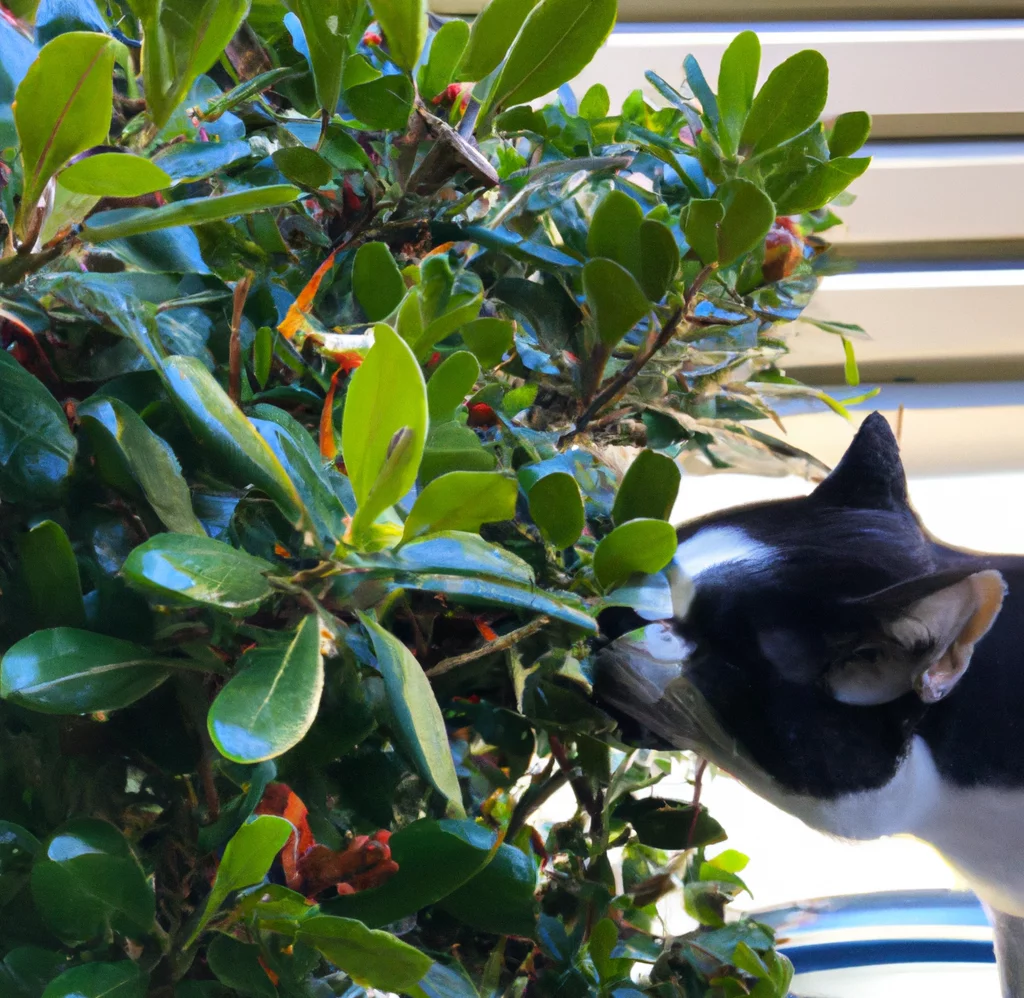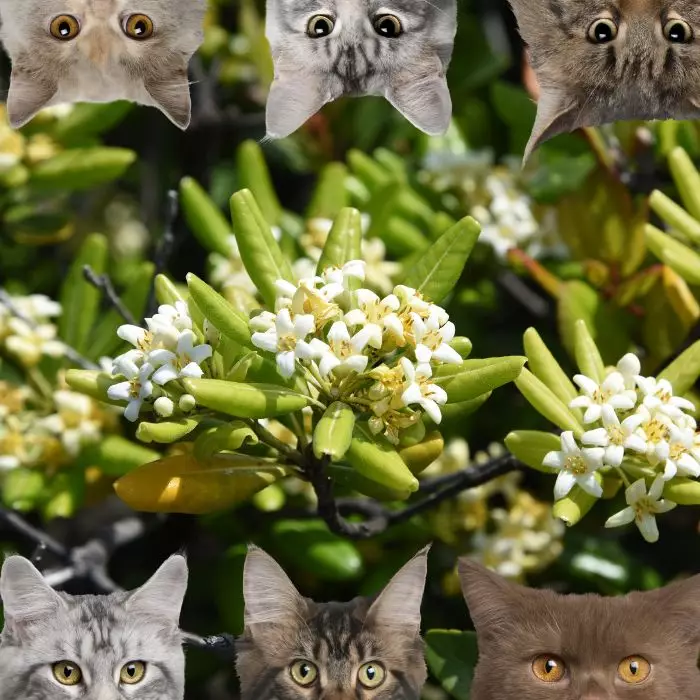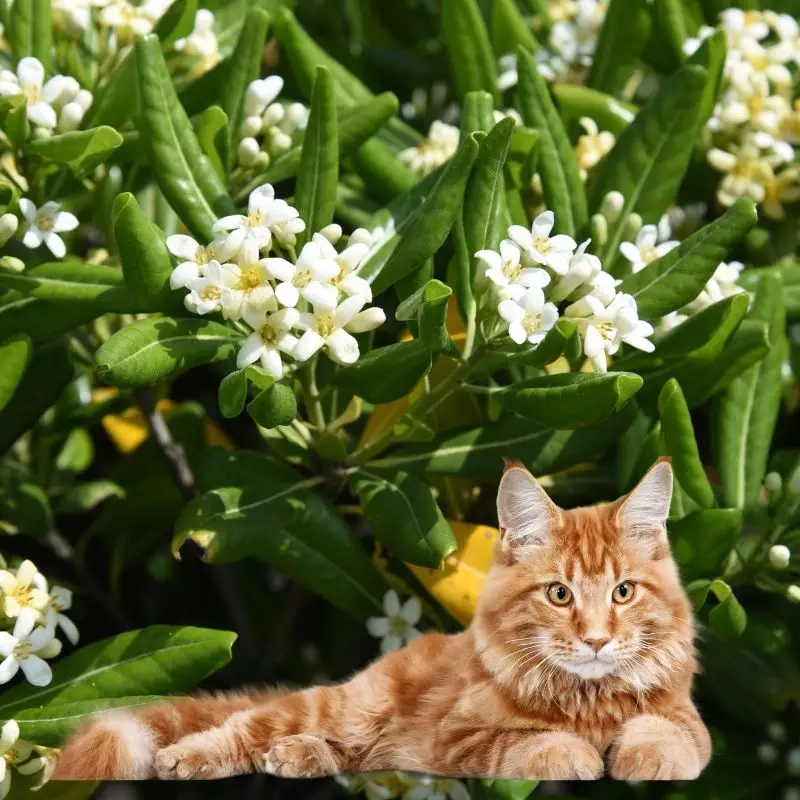No, the Japanese Pittosporum is not toxic to cats. This conclusion is not solely based on our own assessment but has been verified by high-authority websites such as ASPCA and PetMD. The ASPCA specifically lists Japanese Pittosporum as a non-toxic plant for cats, as well as for dogs and horses. It’s important to note that while it’s not considered poisonous, this doesn’t mean it should be fed to your cat on a daily basis.
This article was crafted in collaboration with a team of experienced DVMs (doctors of veterinary medicine). Their invaluable insights ensure that we provide accurate and up-to-date information concerning the potential risks associated with various plants, Japanese Pittosporum in this instance, and their effects on cats. As pet owners, it’s always beneficial to be informed about the plants we introduce into our living spaces, ensuring the safety of our feline companions.
Can Cats Eat Japanese Pittosporum?

There is no problem if your cat has eaten a tiny bit of Japanese Pittosporum. It wouldn’t hurt your cat to have a small bite on the plant but do not be complacent. You should still impose precautions on your cat when they are eating plants.
Plants are generally not suitable for a cat’s diet since they are carnivores. Carnivorous animals do not have the needed enzymes to digest plant materials in their gut. Therefore, the consumption of plants in big quantities can cause them to suffer from indigestion and other GI problems.
It is also important to note that your cat may become poisoned if he or she eats a plant that has dangerous chemical residues from a plant care product, including fertilizers and pesticides. When your cat eats a plant, you should always be on the lookout.
What is a Japanese Pittosporum?

Japanese Pittosporum, a kind of fragrant flowering plant belonging to the Pittosporaceae family of plants, is also known as Australian laurel, mock orange, and Japanese cheesewood. Although it is native to Korea, China, Taiwan, and Japan (south of Kanto), it is grown all over the world as an attractive plant for landscaping and for its cut foliage.
Scientifically known as Pittosporum tobira, Japanese Pittosporum is an evergreen shrub that resembles a tree and may reach heights of 10 meters and a width of 3 meters. In addition, it can be cut into a hedge. Their leaves have an oval shape, curling edges, and can go as long as 10 cm. They have top surfaces that are darker and shinier and are leathery and hairless. An inflorescence, or cluster of fragrant flowers, develops at the branch tips.
The Japanese Pittosporum flower has five white petals that are each around a millimeter long. Additionally, it produces fruit, which is a 1 cm wide hairy, woody capsule with three valves. A bed of gooey pulp is covered in black seeds.
Keeping Cats Away From Japanese Pittosporum

You can prevent your cats from coming near your Japanese Pittosporum or any other plants by training them. Spraying water on them, making loud noises, and saying “no” when they approach your plants are a few methods you can try to teach them to stay away from plants.
Most cat owners also use deterrents which are available in pet supply stores. Be sure to use natural deterrents to prevent toxic chemical residues on your plants that can harm your feline companions.
Plants to Avoid For Your Cats
If you are a cat owner and unsure if the plants growing in your yard are harmful to your cats, check out this list of toxic plants for cats. You can also check our list of non-toxic plants for cats.





